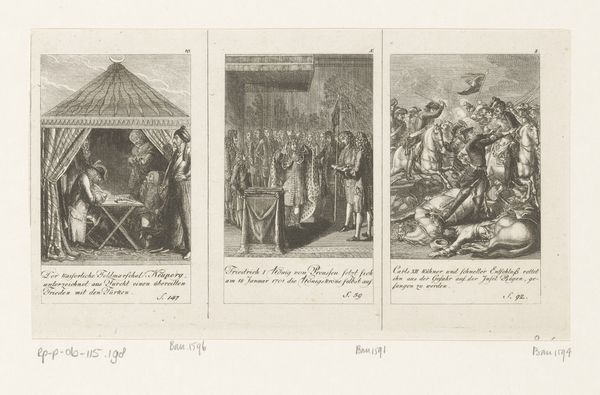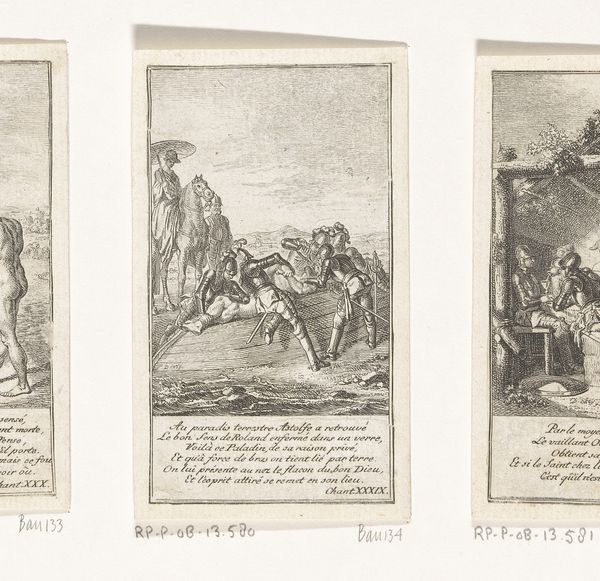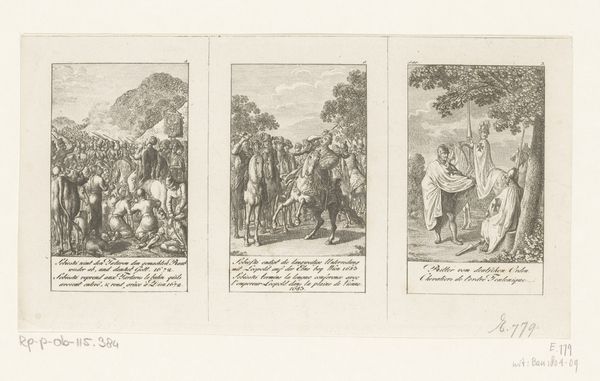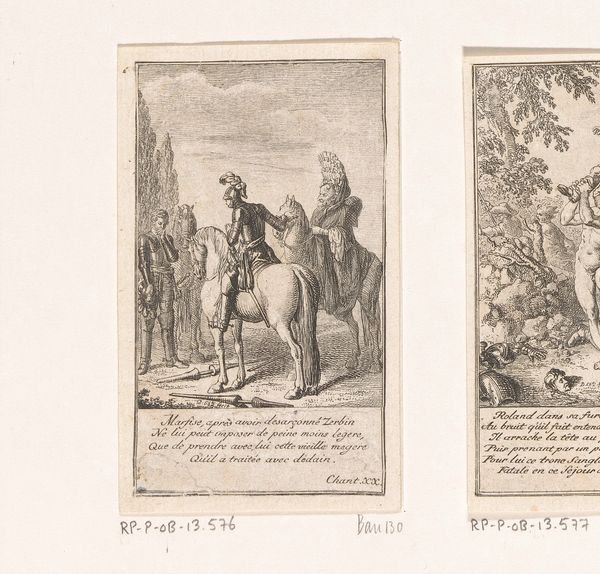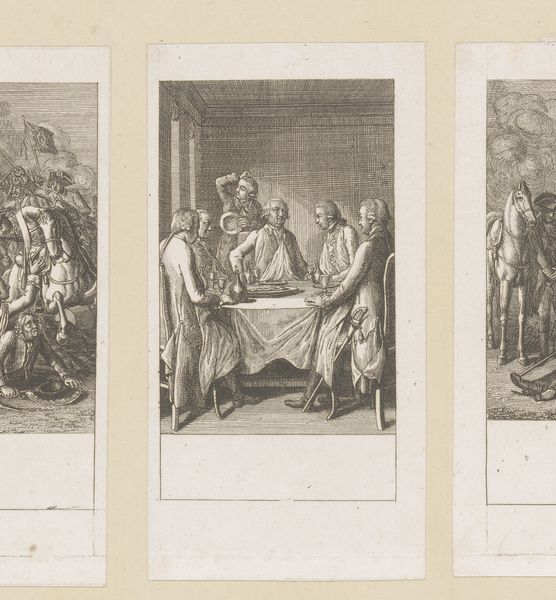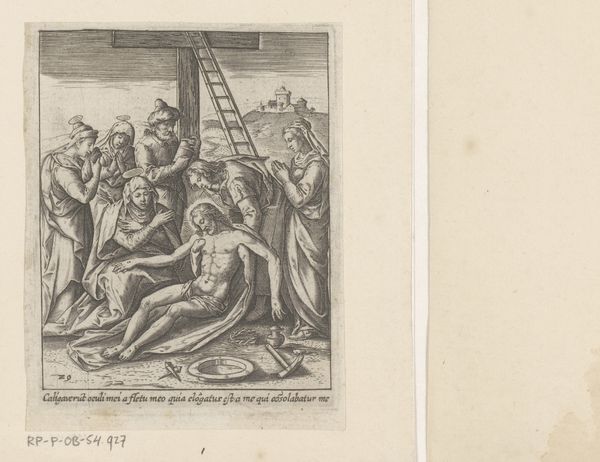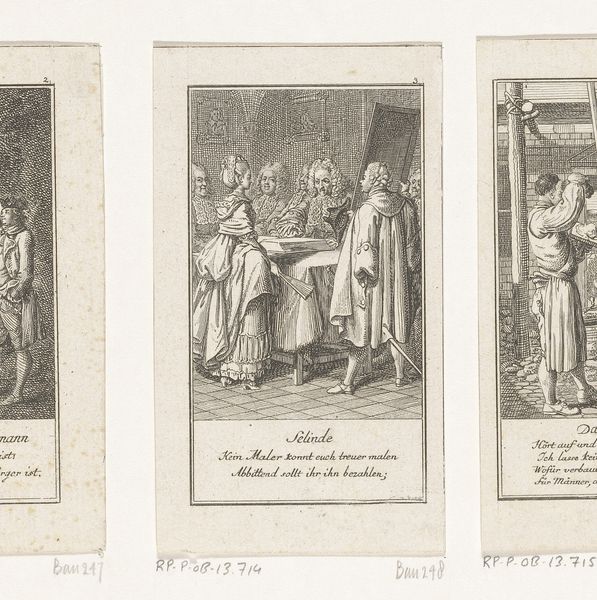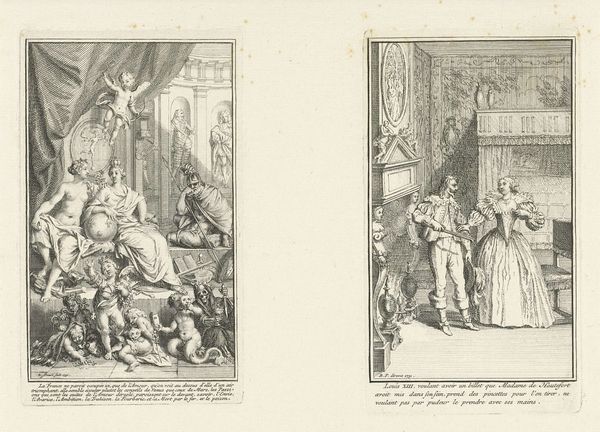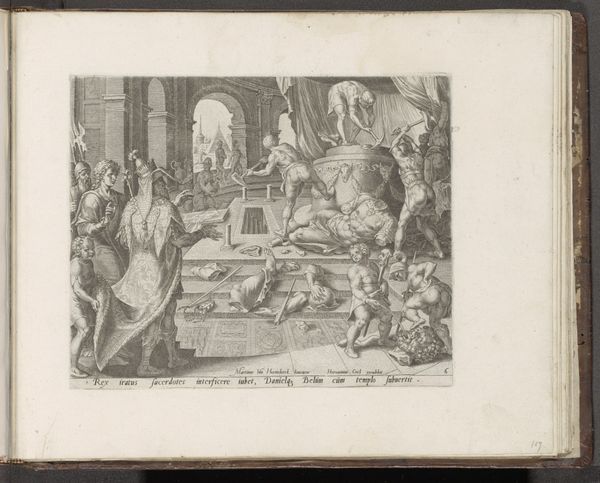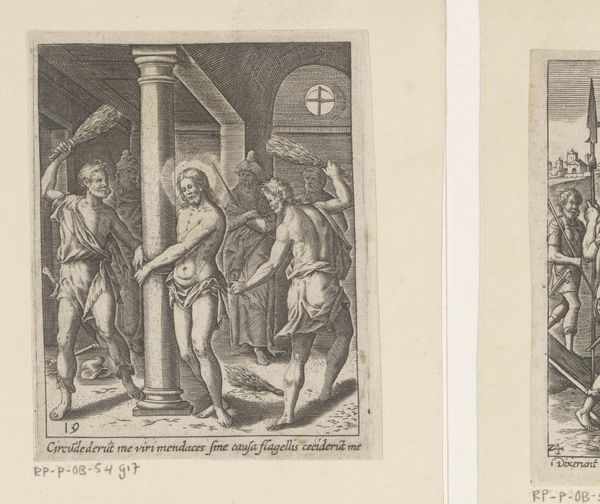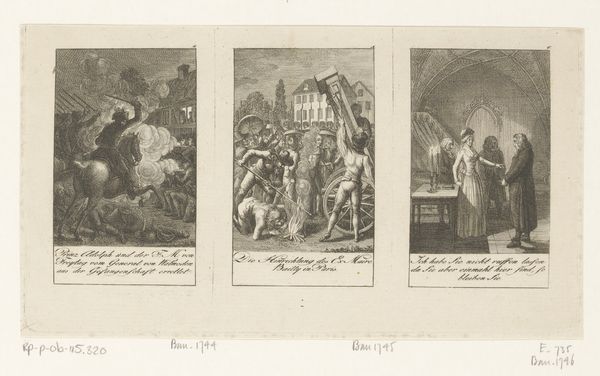
Dimensions: height 92 mm, width 54 mm
Copyright: Rijks Museum: Open Domain
Curator: Editor: Here we have "Ruggiero en het leger van Alcina," created in 1771 by Daniel Nikolaus Chodowiecki. It's an engraving, and the detail is incredible for such a small print. The scene feels quite chaotic and fantastical to me. What catches your eye? Curator: As a materialist, I immediately focus on the engraving process itself. Chodowiecki’s skill in manipulating the metal plate to create such fine lines tells us about 18th-century printmaking – the labour involved, the tools, and the societal demand for reproduced imagery. The availability of printed images also changed how narratives and knowledge were disseminated; what stories were being prioritized and how accessible they were is very interesting. What do you think the choice of print, as opposed to painting, implies about its intended audience? Editor: That's fascinating. I hadn't considered the democratizing aspect of prints. I guess it meant more people could own or see this image, even if they couldn't afford a painting. Is the subject related to the consumption or making of things? Curator: It does. Prints often served as advertisements or were incorporated into books, reflecting and reinforcing cultural values. Chodowiecki might be subtly critiquing the aristocratic tastes for elaborate tales – or even contributing to them through his production. Consider also that printmaking at this time was beginning to transform from craft to a form of industrial production. Editor: That is a great point. So you're saying this artwork not only tells a story, but also tells a story about its own creation and the society it was created in? Curator: Exactly. Examining the materiality of the engraving provides insights into 18th-century societal values, class, and technological shifts within art production itself. By analyzing the labor involved, we start understanding what underpinned Baroque aesthetics and the means by which those aesthetics circulated in society. Editor: That gives me so much to think about regarding not just the image, but its existence as an object within a specific time and place! Thanks.
Comments
No comments
Be the first to comment and join the conversation on the ultimate creative platform.

